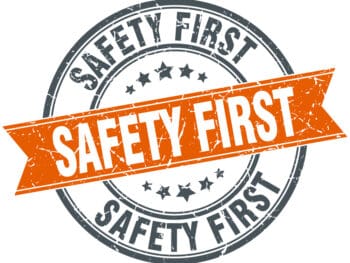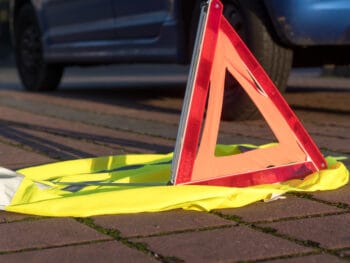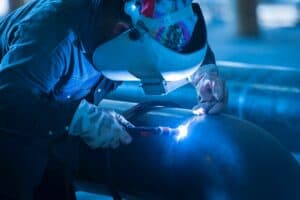I am not 100% sure why I am intrigued by workplace safety. Throughout the course of my day I am always looking for safety violations, especially when I am running errands. My day can take me in and out of businesses of all types, and rarely will a time go by when I do not see some sort of safety violation happening. These may be insignificant in nature, but everyone can always be more proactive when it comes to workplace safety.
Here are 5 ideas to get you thinking about workplace safety, and tips on how to be more proactive with regard to cutting down your workplace injury exposure. I am sure you may have heard of some of these before, but some may be new. Remember it is never too late to start a safety initiative:
- Identify your hazards by reviewing loss run data
The first step in figuring out how to be safer is to figure out where your hazards are. By reviewing your work comp claims history, you can identify certain areas or trends in injury occurrence. But don’t limit yourself to the last 6 months or the last year; go back 2-3 years or further if you can. I would be willing to bet a lot of the machinery and a lot of the work processes that you have in place have been the same for a number of years. So go back 3-5 years, and try to sort the data to see what trends stick out more than others. It could be machinery injuries, types of injuries such as lifting or slip/falls, or maybe it is a certain department that has more injuries than the other departments. Whatever the case may be, you need to begin with sorting the data.
- Analyze the risk by job classification
So now that you have sorted your data, you need to implement ways to become a safer place to work. Some tasks on the work floor may yield more risk than others. For example, a welder may have more risk associated with their job than an accountant or Human Resources person. This is taking your data analyzing a step further by classifying it by the actual job or job tasks. This will help you come up with ways to try reduce your workplace safety risks.
- Implement hand/finger safety requirements
For whatever reason, a lot of employers modify machinery once they purchase it. This may be to customize the machine for whatever task they have to complete during the job. Guards are removed, auto-shutoff buttons are covered, belts and engines may be exposed, etc. The hand is one of the leading body parts that are injured. This comes from reaching into machines or from handling materials without the proper gloves. Remember that safety guards are there for a reason. The last thing you should do is tamper with a machine. Countless people lose fingers or hands due to severe lacerations, amputations, or limbs becoming caught in the moving parts of machinery. Even more surprising is that oftentimes management is not aware that the machines are modified to begin with. Workers that use the machines may modify safety components for whatever reason, and it is only after an injury that supervisors notice that the machine was modified.
- Eye injury safety programs
The eye is another body part that gets injured quite often. This is usually from flying debris. These injuries are the easiest to prevent, since safety glasses are no longer the bulky, heavy pieces of eyewear that they used to be. Companies need to identify heat, chemicals, dust/airborne particles, radiation, welding flash, etc. and implement areas where eye protection is mandatory. Provide your workers with dependable, easy to wear safety glasses and make sure they use them.
- Slips, trips, and falls
These injuries are more difficult to identify, but if you are proactive in inspecting areas such as flooring, steps, railings, ladders, and stools, then you should see a decrease in injury occurrence. Also important is the use of non-slip footwear and work boots to cut down on slip exposure. Another thing to remember is to inspect entryways, hallways, and steps that are not covered in non-slip flooring. These areas become hazards when it is rainy or snowing outside. You should keep floor cleaning equipment around to clean up liquid spills, condensation, and materials spills to prevent others from slipping and falling in someone else’s mess.
The best workers compensation claim is the one that never happens. Safety should be an integral part of any workers compensation management program.
For assistance in helping you get started with safety, contact us today.
Author Michael B. Stack, CPA, Director of Operations, Amaxx Risk Solutions, Inc. is an expert in employer communication systems and part of the Amaxx team helping companies reduce their workers compensation costs by 20% to 50%. He is a writer, speaker, and website publisher. www.reduceyourworkerscomp.com. Contact: mstack@reduceyourworkerscomp.com.
©2013 Amaxx Risk Solutions, Inc. All rights reserved under International Copyright Law.







